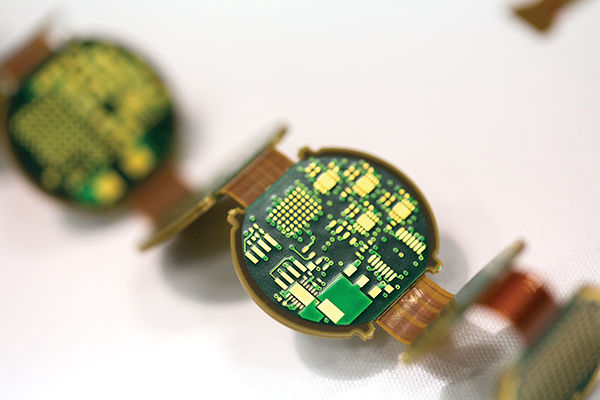Keeping Tooling Top of Mind

Given coplanarity deviations, there’s a way to manage squeegee pressure.
It’s an oft forgotten element of the printing process, but one that is the absolute foundation of a good print. Because the tooling block is more or less out of sight, it is easy for it to also be out of mind. Back in the days of 2mm-thick printed circuit boards and low densities, you could get away with a little forgetfulness. Today’s highly miniaturized assemblies, however, dictate a bit more keen attention to substrate support. Even slight deviations from improper manufacture or rogue components in the pockets of the tooling block can wreak havoc on yield.
In an ideal world, everything – the board and tooling – would be manufactured to be completely flat and coplanar. In reality, this is almost never the case. And, when coplanarity is off significantly, there may be issues with proper material volumes being printed. More common than that, however, is the flatness of the board is affected by a component – or components – that have dropped off the bottom side of the board into the tooling block. Once the top side of the board has been printed, placed and reflowed, it goes back through the line for second side assembly. If there has been an error, and a component hasn’t been mechanically soldered, it can drop off into a pocket, and the next board that comes along now has interference in the pocket. This can elevate the board, increasing the deflection and affecting print quality. The opposite can happen if there is a decrease in deflection for some reason (a pin that doesn’t fire on automatic board support or a poorly placed/misplaced magnetic pin, for example).
Software-controlled safeguards help ensure engineers and operators are ever-mindful of any issues with tooling. Leveraging the functionality of the printer’s pressure feedback mechanism, the amount of force and deflection of the squeegee is evaluated and reads if the pressure applied is within tolerance. This capability ensures that if an engineer programs in 5kg of force, then 5kg of force of displacement is applied onto the squeegee blade. Tying into the pressure feedback system, which is controlled by a strain gage, the pint platform deviation monitor software reads the strain gage measurements for the duration of the print stroke. Because the squeegee blade is set to traverse at a set pressure, if the strain gage sees a massive rise in deflection because the board is now sitting higher in the tooling nest than it should be and the squeegee is trying to push through the stencil, that increase in pressure is logged. Understanding that all boards and tooling are not absolutely flat, this function can be set as an output to an SPC tool, and the engineer has the option of putting in upper and lower deflection control limits that would account for any slight variations in coplanarity. When the printer registers a deviation in deflection, it will complete that print stroke and then issue a warning. It’s then up to the operator to clear the warning and reprint, or ignore the warning. A note of caution: Ignoring the warning is not advised!
Eventually, multiple warnings will wear down even the most immune operator. Worse, disregarding the warnings can result in serious defects and yield losses.
If the tooling is wrong, the result is wrong. When the pressure is too high, material may get scooped out of larger apertures during the print stroke. Result: insufficient material volume and possible stencil damage from coining. If the pressure is too low, it’s possible to experience excessive bridging. Using a tool like a deviation monitor eliminates tooling nightmares, improves yield, lowers cost and makes sure tooling stays in the front of one’s mind, as the warnings won’t let you forget.

Figure 1. Miniaturized products mean miniaturized components, which require robust substrate support.
is global applied process engineering manager at ASM Assembly Systems, Printing Solutions Division, DEK (asmpt.com); clive.ashmore@asmpt.com. His column appears bimonthly.
Press Releases
- 2026 IEEE Electronic Components and Technology Conference Student Innovation Challenge Pre-registration Deadline Extended to January 11, 2026
- PCBsync PCB Assembly Introduces Full-Scale Electronic Manufacturing Service
- Magic Leap Partners with Pegatron for AR Glasses Components Production
- TEXMAC/Takaya Appoints ARK Mfg. as New Rep in Arizona







